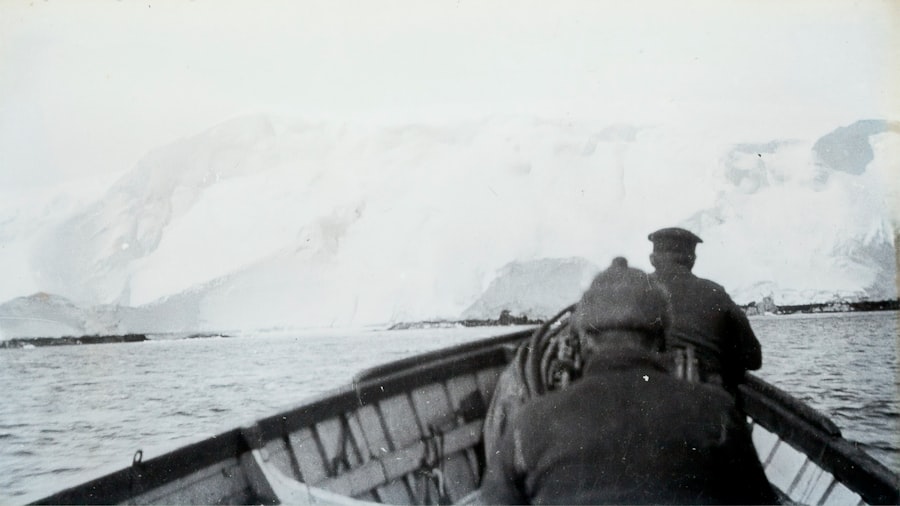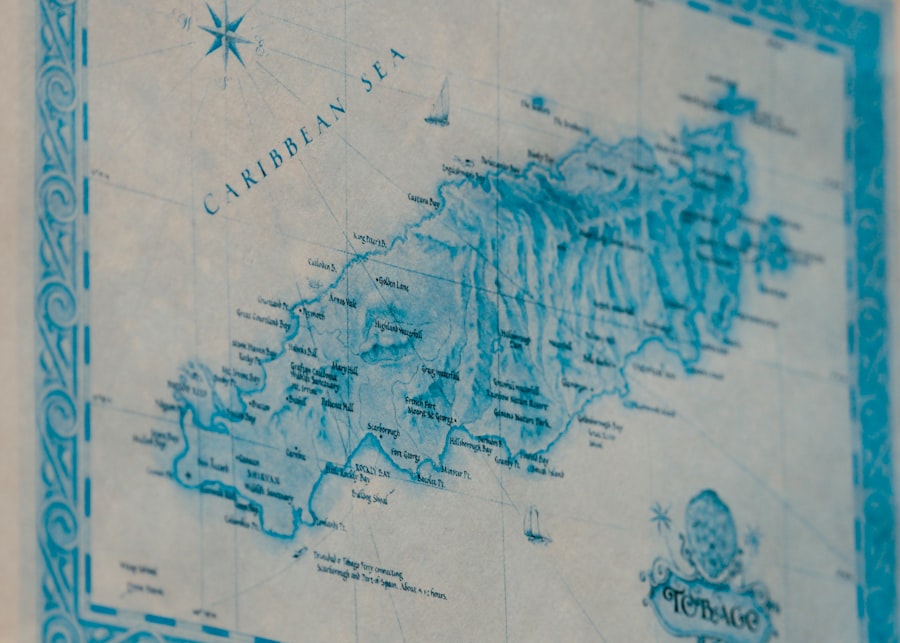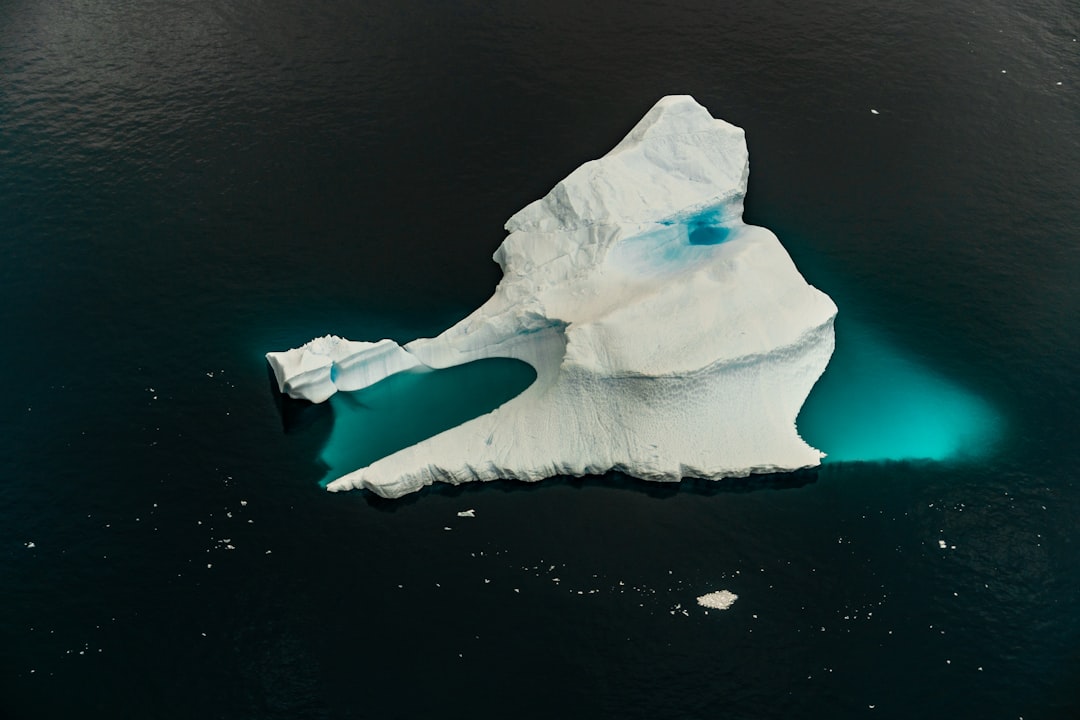The Drake Passage, a body of water situated between the southern tip of South America and Antarctica, is renowned for its tumultuous seas and breathtaking vistas. Named after the English explorer Sir Francis Drake, who navigated these waters in the late 16th century, the passage serves as a critical maritime route for vessels venturing to and from the Antarctic region. Stretching approximately 600 miles, it is often regarded as one of the most challenging sea crossings in the world due to its unpredictable weather and strong currents.
The passage not only connects two significant landmasses but also acts as a gateway to the pristine wilderness of Antarctica, drawing adventurers and researchers alike. Navigating the Drake Passage is not merely a journey; it is an experience that encapsulates the raw power of nature. The waters are known for their fierce winds and towering waves, which can reach heights of over 30 feet during storms.
This unpredictability has earned the passage a reputation that both intimidates and excites those who dare to traverse it. For many travelers, crossing the Drake Passage is a rite of passage, a test of endurance that promises unforgettable memories and encounters with some of the most remote landscapes on Earth.
Key Takeaways
- The Drake Passage is a body of water between South America’s Cape Horn and the South Shetland Islands of Antarctica, known for its rough seas and challenging sailing conditions.
- Weather conditions in the Drake Passage can be unpredictable and extreme, with strong winds, high waves, and rapidly changing temperatures.
- When choosing a vessel for the journey, consider factors such as size, stability, and amenities to ensure a comfortable and safe crossing.
- Safety measures and precautions, such as attending safety briefings, wearing appropriate gear, and following crew instructions, are essential for a smooth and secure passage.
- Wildlife encounters in the Drake Passage are a highlight of the journey, with opportunities to spot various species of whales, seals, and seabirds.
Weather conditions in the Drake Passage
The weather conditions in the Drake Passage are notoriously volatile, characterized by rapid changes that can occur within minutes. The convergence of the Atlantic and Pacific Oceans creates a unique climatic environment where storms can brew unexpectedly. Travelers should be prepared for a range of weather scenarios, from calm and sunny days to fierce gales and heavy rain.
The average temperature in the region hovers around freezing during the Antarctic summer months, but wind chill can make it feel significantly colder. Understanding these weather patterns is crucial for anyone planning to cross the Drake Passage. The best time for such an expedition is typically during the austral summer, from November to March, when conditions are relatively milder.
However, even during this period, travelers must remain vigilant and adaptable, as sudden squalls can arise without warning. Those who embark on this journey should be equipped with appropriate clothing and gear to withstand the elements, ensuring that they can fully enjoy the breathtaking scenery without being hindered by adverse weather.
Choosing the right vessel for the journey

Selecting the appropriate vessel for a journey across the Drake Passage is paramount to ensuring safety and comfort. Various types of ships are available, ranging from large cruise liners to smaller expedition vessels. Larger ships often provide more amenities and stability, making them suitable for travelers who prioritize comfort during their crossing.
However, smaller vessels offer a more intimate experience, allowing passengers to get closer to wildlife and explore remote areas that larger ships cannot access. When choosing a vessel, travelers should consider factors such as size, stability, and onboard facilities. Modern expedition ships are designed specifically for navigating challenging waters like those found in the Drake Passage.
They are equipped with advanced technology to enhance safety and comfort, including stabilizers that reduce motion and improve passenger experience. Additionally, many vessels offer expert guides who provide insights into the unique ecosystems and history of the region, enriching the overall journey.
Safety measures and precautions
| Safety Measure | Precaution |
|---|---|
| Wearing masks | Ensure masks cover nose and mouth |
| Hand hygiene | Regularly wash hands with soap and water |
| Social distancing | Maintain at least 6 feet distance from others |
| Cleaning and disinfecting | Regularly clean and disinfect frequently touched surfaces |
Safety is a top priority when traversing the Drake Passage, given its reputation for unpredictable conditions. Reputable tour operators implement stringent safety measures to ensure that passengers are well-prepared for any eventuality. Before embarking on their journey, travelers typically receive comprehensive briefings on safety protocols, including emergency procedures and equipment usage.
Life jackets, lifeboats, and other safety gear are readily available on board, ensuring that everyone is equipped to handle emergencies. In addition to onboard safety measures, travelers should also take personal precautions. It is advisable to stay informed about weather forecasts and sea conditions throughout the journey.
Passengers should familiarize themselves with emergency exits and procedures while remaining attentive to crew instructions during drills. By being proactive about safety, travelers can enjoy their crossing with greater peace of mind, allowing them to focus on the stunning landscapes and wildlife that await them.
Wildlife encounters in the Drake Passage
One of the most captivating aspects of crossing the Drake Passage is the opportunity to encounter diverse wildlife in their natural habitats. The waters are teeming with life, including various species of seabirds such as albatrosses and petrels that glide gracefully above the waves. These magnificent birds are often seen following ships, providing a spectacular display of aerial acrobatics as they ride the wind currents.
In addition to avian life, marine mammals such as whales can frequently be spotted in these waters. Species like humpback whales, orcas, and minke whales migrate through the Drake Passage, offering travelers a chance to witness these majestic creatures up close. Many expedition vessels include guided wildlife watching excursions as part of their itineraries, enhancing the experience by providing expert knowledge about the animals encountered.
For nature enthusiasts and photographers alike, these moments create lasting memories that define their journey across this remarkable passage.
Packing essentials for the crossing

Packing appropriately for a journey across the Drake Passage is essential for ensuring comfort and enjoyment during the crossing. Given the unpredictable weather conditions, travelers should prioritize layering their clothing. A waterproof outer layer is crucial for protection against wind and rain, while thermal layers underneath will provide warmth in colder temperatures.
Accessories such as gloves, hats, and scarves are also recommended to shield against biting winds. In addition to clothing, travelers should consider bringing personal items that enhance their experience on board.
A good camera is also essential for capturing breathtaking landscapes and memorable moments during the crossing. Furthermore, seasickness medication should be included in packing lists to mitigate any discomfort caused by rough seas. By preparing thoughtfully, travelers can ensure they have everything they need for an enjoyable adventure across one of the world’s most iconic maritime routes.
Activities and entertainment on board
While crossing the Drake Passage can be an exhilarating experience filled with breathtaking views and wildlife encounters, it is also important for travelers to have access to activities and entertainment on board their vessel. Many modern expedition ships offer a range of amenities designed to keep passengers engaged during their journey. From educational lectures led by expert naturalists to interactive workshops on photography or marine biology, there are numerous opportunities for learning and exploration while at sea.
In addition to educational programs, passengers can enjoy social activities such as movie nights or themed dinners that foster camaraderie among fellow travelers. Relaxation areas equipped with comfortable seating provide spaces for reading or simply enjoying panoramic views of the ocean.
With a variety of options available, travelers can find ways to make their time on board both enjoyable and enriching.
Tips for avoiding seasickness
Seasickness is a common concern for many travelers embarking on a journey across the Drake Passage due to its notorious rough waters. However, there are several strategies that individuals can employ to minimize discomfort during their crossing. One effective approach is to choose a cabin located in the middle of the ship where motion is less pronounced compared to cabins at either end.
Additionally, staying on deck and focusing on the horizon can help alleviate feelings of nausea by providing a stable point of reference. Another useful tip is to maintain hydration and consume light meals before and during the crossing. Heavy or greasy foods can exacerbate seasickness symptoms, so opting for bland snacks may be beneficial.
Over-the-counter medications specifically designed for motion sickness can also be effective; however, it is advisable to consult with a healthcare professional before taking any medication. By being proactive about managing seasickness, travelers can enhance their overall experience while navigating this challenging yet awe-inspiring passage.
Historical significance of the Drake Passage
The historical significance of the Drake Passage extends far beyond its challenging waters; it has played a pivotal role in maritime exploration and scientific research over centuries. Sir Francis Drake’s voyage through these waters in 1578 marked one of the earliest European explorations of this region, paving the way for future expeditions to Antarctica and beyond. The passage has since become synonymous with adventure and discovery as explorers sought new trade routes and territories.
In addition to its exploration history, the Drake Passage has also been crucial for scientific research related to climate change and marine ecosystems. Researchers study ocean currents and weather patterns in this area to better understand global climate systems. The passage serves as a natural laboratory where scientists can observe interactions between different oceanic bodies and their impact on marine life.
This blend of historical exploration and contemporary research underscores the importance of the Drake Passage as both a geographical landmark and a site of ongoing discovery.
Popular destinations beyond the Drake Passage
While crossing the Drake Passage is an adventure in itself, it also serves as a gateway to some of the most breathtaking destinations on Earth—Antarctica being at the forefront. Once travelers successfully navigate these waters, they are rewarded with access to stunning landscapes characterized by towering icebergs, vast glaciers, and unique wildlife habitats. Popular landing sites include Deception Island with its volcanic landscapes and Port Lockroy—a historic British research station turned museum.
Beyond Antarctica, many expeditions also explore nearby sub-Antarctic islands such as South Georgia and the Falkland Islands. These locations offer rich biodiversity and opportunities for wildlife encounters that complement those experienced during the crossing itself. Travelers may find themselves hiking through lush landscapes teeming with penguins or observing seals basking on rocky shores—each destination providing its own unique charm and allure.
Planning for the unexpected: emergency procedures and protocols
Given the unpredictable nature of maritime travel through regions like the Drake Passage, it is essential for both operators and passengers to have well-defined emergency procedures in place. Reputable expedition companies prioritize safety by conducting regular drills that familiarize crew members with emergency protocols ranging from medical emergencies to evacuation procedures. Passengers are encouraged to participate in these drills so they understand what actions to take should an unexpected situation arise.
In addition to onboard protocols, travelers should also be aware of communication systems available during their journey. Many modern vessels are equipped with satellite communication technology that allows them to stay connected even in remote areas. This capability ensures that help can be summoned quickly if needed while providing peace of mind for both crew members and passengers alike.
By planning ahead for potential emergencies and understanding established protocols, travelers can embark on their journey across the Drake Passage with confidence in their safety measures. In conclusion, traversing the Drake Passage offers an unparalleled adventure filled with natural beauty, wildlife encounters, and rich history. By understanding weather conditions, choosing suitable vessels, prioritizing safety measures, packing wisely, engaging in onboard activities, managing seasickness effectively, appreciating historical significance, exploring popular destinations beyond its shores, and preparing for unexpected situations—travelers can ensure an unforgettable experience as they navigate this iconic maritime route.
In 2023, the Drake Passage continues to be a significant topic of interest for both researchers and adventurers alike. This treacherous stretch of water, known for its unpredictable weather and challenging navigation, remains a critical route for those journeying to Antarctica. For more insights into the geographical and historical significance of the Drake Passage, you can explore a related article on MyGeoQuest, which delves into the intricacies of this formidable maritime passage and its impact on global exploration.
WATCH HERE: Drake Passage: Earth’s Deadliest Waters Revealed
FAQs
What is the Drake Passage?
The Drake Passage is the body of water between the southern tip of South America and the northern tip of the Antarctic Peninsula. It connects the southwestern part of the Atlantic Ocean with the southeastern part of the Pacific Ocean.
Why is the Drake Passage significant?
The Drake Passage is known for its rough seas and strong winds, making it one of the most challenging and unpredictable bodies of water to navigate. It is also a major gateway for the movement of ocean currents and marine life between the Atlantic and Pacific Oceans.
What is the significance of the Drake Passage in 2023?
In 2023, the Drake Passage is of particular significance for scientific research and exploration, as it provides access to the Antarctic region for various research expeditions, including studies on climate change, marine biology, and geology.
What are the conditions like in the Drake Passage?
The Drake Passage is known for its stormy and unpredictable weather, with strong winds and rough seas. It is also characterized by cold temperatures and icebergs, making it a challenging environment for maritime activities.
How is the Drake Passage navigated?
Navigating the Drake Passage requires careful planning and experienced crew due to its challenging conditions. Ships typically use advanced navigation technology and weather forecasting to safely traverse the passage.
What wildlife can be found in the Drake Passage?
The Drake Passage is home to a diverse range of marine wildlife, including whales, seals, and various seabird species. It is also an important feeding and breeding ground for many marine animals.
